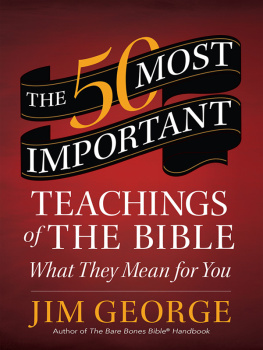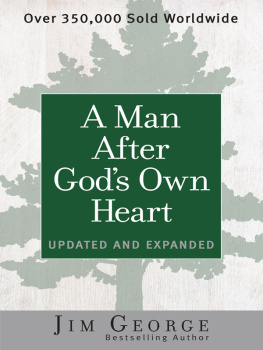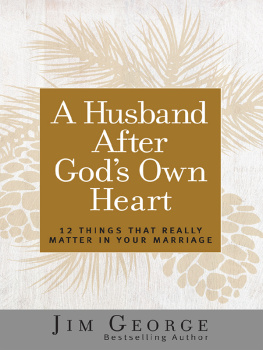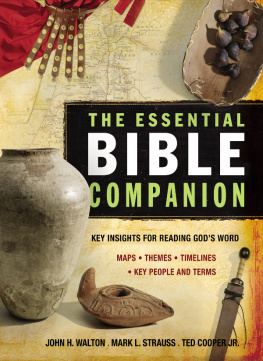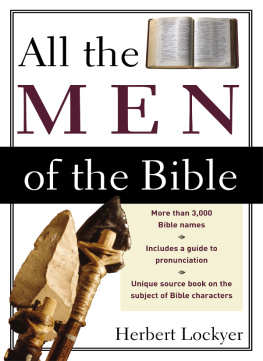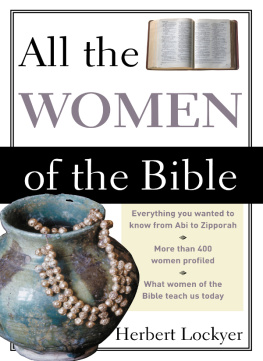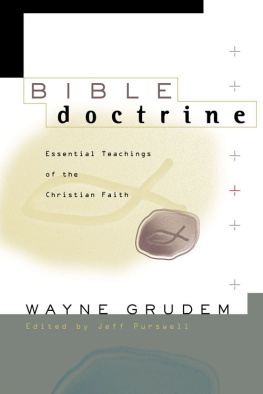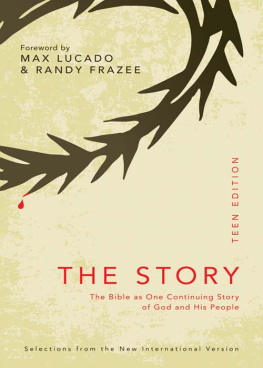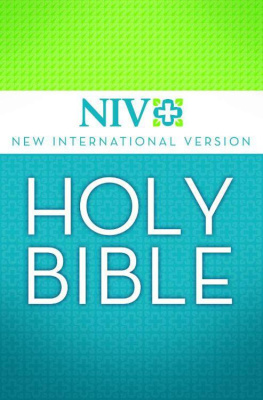

HARVEST HOUSE PUBLISHERS
EUGENE, OREGON
Unless otherwise indicated, all Scripture quotations are taken from the Holy Bible, New International Version, NIV. Copyright 1973, 1978, 1984, 2011 by Biblica, Inc. Used by permission. All rights reserved worldwide.
Verses marked NASB are taken from the New American Standard Bible, 1960, 1962, 1963, 1968, 1971, 1972, 1973, 1975, 1977, 1995 by The Lockman Foundation. Used by permission. (www.Lockman.org)
Verses marked NKJV are taken from the New King James Version. Copyright 1982 by Thomas Nelson, Inc. Used by permission. All rights reserved.
Verses marked NLT are taken from the Holy Bible , New Living Translation, copyright 1996, 2004, 2007, 2013 by Tyndale House Foundation. Used by permission of Tyndale House Publishers, Inc., Carol Stream, Illinois 60188. All rights reserved.
Italicized words in Scripture quotes indicates emphasis added by author.
Cover by Dugan Design Group, Bloomington, Minnesota
THE 50 MOST IMPORTANT TEACHINGS OF THE BIBLE
Copyright 2015 Jim George
Published by Harvest House Publishers
Eugene, Oregon 97402
www.harvesthousepublishers.com
ISBN 978-0-7369-6017-5 (pbk.)
ISBN 978-0-7369-6019-9 (eBook)
All rights reserved. No part of this electronic publication may be reproduced, stored in a retrieval system, distributed, or transmitted in any form or by any meanselectronic, mechanical, digital, photocopy, recording, or any otherwithout the prior written permission of the publisher. The authorized purchaser has been granted a nontransferable, nonexclusive, and noncommercial right to access and view this electronic publication, and purchaser agrees to do so only in accordance with the terms of use under which it was purchased or transmitted. Participation in or encouragement of piracy of copyrighted materials in violation of authors and publishers rights is strictly prohibited.
Contents
I ts been said that what you believe is how you behave. That is, what you believe about God, His written revelation, the Bible, and His ultimate revelation, His Son, will define how you live your life. My goal for this book about what the Bible teaches is to help give you a better understanding of the key teachings that are critical for your growth as a Christian. While all of the teachings in the Bible are important because they all communicate what God wants us to know about Him, there are some teachings that are more foundational than others. The question, of course, is this: Where do you start?
I have written The 50 Most Important Teachings in the Bible to help provide you with a starting point. These 50 teachings will guide your initial study of major themes such as
God as the Creator of the universe and His dealings with man
Jesus relationship with the Father and the Holy Spirit
The nature of the Bible as the written revelation of God
Gods solution to the problem of sin
The ministry of Jesus and the Holy Spirit
Gods plans for the future, including the end of time
As you read along, keep in mind that the teachings presented in this book are not ranked in any particular order. And because the intent of this book is to provide the basic essentials, if you would like to dig deeper, then youll want to seek other sources for additional information on a given topic.
It is my prayer that this volume, along with your personal reading and study of the Bible, will assist you in fulfilling Gods desire that you grow in the grace and knowledge of our Lord and Savior Jesus Christ. To him be glory both now and forever! Amen (2 Peter 3:18).

The grass withers and the flowers fall, but the word of our God endures forever
(Isaiah 40:8).
All Scripture is God-breathed and is useful for teaching, rebuking, correcting and training in righteousness
(2 Timothy 3:16).
The word of God is alive and powerful. It is sharper than the sharpest two-edged sword, cutting between soul and spirit, between joint and marrow. It exposes our innermost thoughts and desires
(Hebrews 4:12 NLT ).
S everal years ago my wife and I traveled to France. Instead of finding a hotel in Paris, we decided to stay outside of the city in a small country village so we could wind down after working hard to meet several book deadlines. I lasted about two days in the quiet village before I was ready for a road trip (or in our case, a train trip) into Paris. Our first stop, as you might guess, was a ride up to the top of the Eiffel Tower. Then we were off to the Louvre, one of the worlds premiere museums of art. And even though Im not an educated lover of art, my first thought was to locate the Mona Lisa , which is one of the most famous paintings of all time, painted by the famous Italian artist Leonardo da Vinci from about 1504 to 1519.
Even though the Mona Lisa is special, it pales in comparison to the uniqueness of the Bible! There are many masterpieces in the art world, but there is only one Bible. The Bible is unlike any other book because it was written by God. It is also the most widely read book in the world, having been translated into hundreds of languages. Consider these reasons why the Bible is unique:
The Bible is a book of many books. When you skim the pages of a Bible, what do you notice? As the pages fly by, youll see right away that the Bible contains many different books made up of varying numbers of chapters. The 66 books of the Bible were written by more than 40 authors, who originally wrote it in Hebrew, Greek, and Aramaic. Their writing of this volume took place over the course of some 2000 years.
No other book can boast of this unique composition, and the most amazing thing about these 66 books by 40-plus authors is their one unified message describing and pointing toward Jesus Christ. The message that God, the Creator of the universe, wanted mankind to understand was the relationship He had with Jesus, and how that relationship affects all mankind both now and on into eternity.
The Bible is the written Word of God . Starting in the Old Testament, the authors of the Bible asserted more than 3800 times that what they were writing is the Word of God. In addition, the phrases the word of God or the oracles of God occur more than 40 times in the New Testament.
How could this be possible? How could the words that make up the Bible come from the hearts and minds of men, and at the same time, from the heart and mind of God? The apostle Peter explained it this way: Prophecy never had its origin in the human will, but prophets, though human, spoke from God as they were carried along by the Holy Spirit (2 Peter 1:21).
The phrase carried along means that even though the human authors were the ones who were writing Scripture, God, the Holy Spirit, managed them as they wrote. It would be like a manager in a store or in a corporate department at work. He or she doesnt do the work, they just oversee and direct others toward finishing the work. In the same way, the writers of Scripture used their own vocabulary, personalities, and thought processes, to compose and record what God wanted written. God, the Holy Spirit, was watching over the authors of the 66 books of the Bible and managing them toward a final product whose content was made up of the exact words God intended, and without error. It couldnt be any other way because God, who does not lie (Titus 1:2), produced a book that was without error in the original.
Next page
